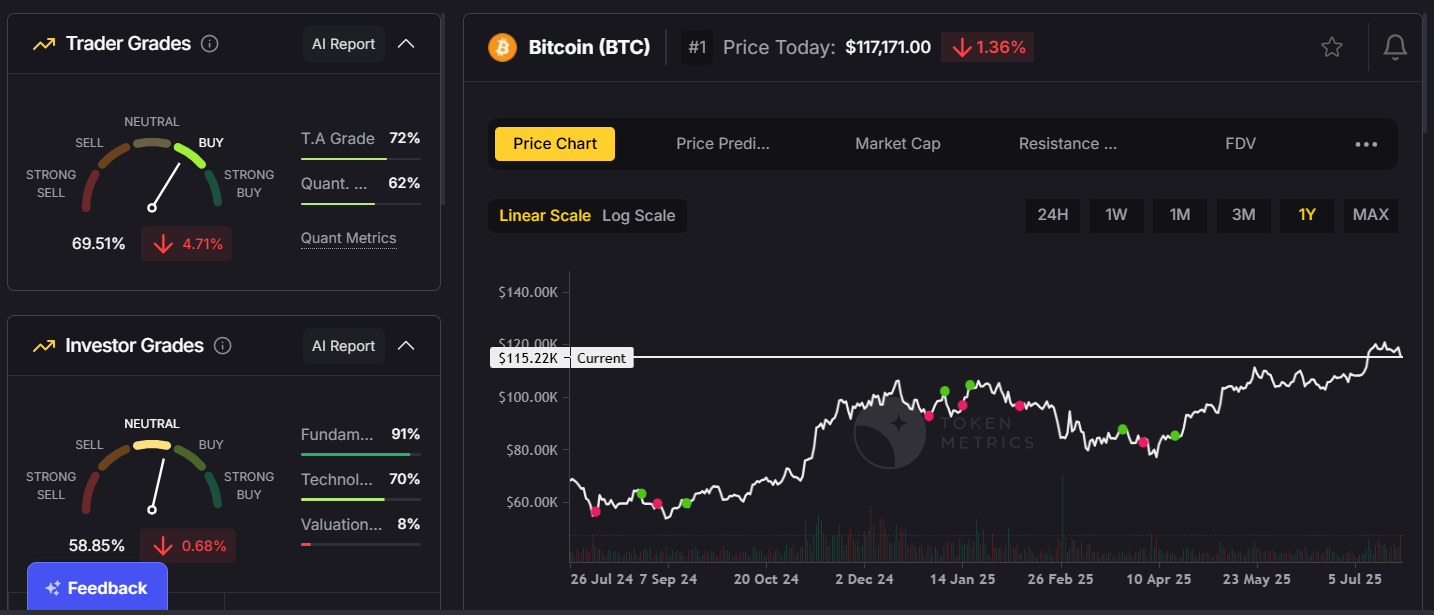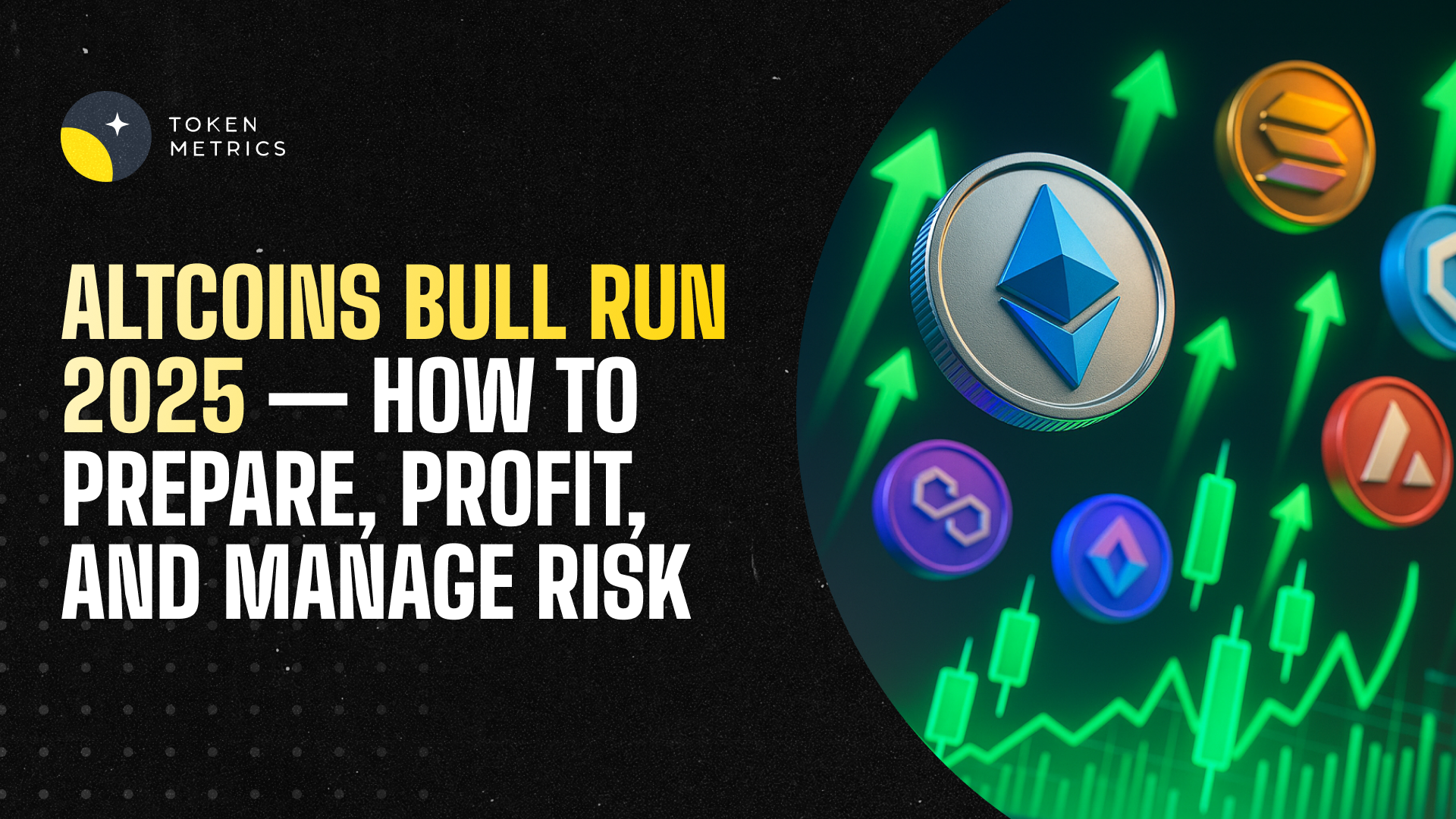
What is the Biggest Challenge in Building DApps?

Bottom Line Up Front: User experience remains the single biggest challenge in building decentralized applications (DApps), encompassing wallet complexity, transaction costs, slow speeds, and the steep learning curve that prevents mainstream adoption—despite significant technological advances in blockchain infrastructure.
Decentralized applications represent the future of web3, promising censorship-resistant, permissionless platforms that return control to users. However, despite billions in venture capital funding and thousands of DApps launched across multiple blockchains, mainstream adoption remains elusive. The challenges facing DApp developers are multifaceted and interconnected, but one stands above the rest: creating an experience that rivals traditional centralized applications while maintaining the core principles of decentralization.
For developers and investors navigating this complex landscape, platforms like Token Metrics provide critical insights into which DApps are overcoming these challenges and gaining real user traction through comprehensive analytics and on-chain data analysis.
The User Experience Barrier
While technological purists might point to scalability or security as the primary challenges, the reality is that user experience (UX) creates the most significant barrier to DApp adoption. Traditional application users expect seamless, intuitive experiences—one-click sign-ups, instant loading, and forgiving interfaces. DApps, by contrast, often require users to navigate complex wallet setups, manage private keys, pay gas fees, wait for block confirmations, and understand blockchain-specific concepts before performing even simple actions.
This friction manifests in stark adoption statistics. As of 2025, even the most successful DApps have user bases measured in hundreds of thousands or low millions—a fraction of comparable centralized applications. Metamask, the leading Ethereum wallet, has approximately 30 million monthly active users globally, while traditional fintech apps like PayPal serve hundreds of millions.
Wallet Management: The First Hurdle
The journey begins with wallet onboarding, an immediate obstacle for non-technical users. Creating a self-custodial wallet requires users to understand public-private key cryptography, secure their seed phrases (often 12-24 random words), and accept that there's no "forgot password" option. Lose your seed phrase, and your assets are permanently inaccessible—a terrifying proposition for mainstream users accustomed to account recovery options.
Smart contract wallets and social recovery mechanisms are emerging solutions, but they add complexity to the development process and aren't yet standardized across the ecosystem. Account abstraction promises to abstract away these complexities, but implementation remains inconsistent across different blockchains.
Transaction Costs and Volatility
Gas fees represent another critical challenge that directly impacts user experience and development decisions. During periods of network congestion, Ethereum transaction costs have exceeded $50-100 for simple operations, making small-value transactions economically impractical. While Layer 2 solutions like Arbitrum, Optimism, and Polygon have dramatically reduced costs, they introduce additional complexity through bridge mechanisms and fragmented liquidity.
Moreover, gas fee volatility creates unpredictable user experiences. A DApp might cost pennies to use one day and dollars the next, depending on network conditions. This unpredictability is antithetical to the consistent pricing models users expect from traditional applications.
Developers must architect DApps to minimize on-chain transactions, carefully optimize smart contract code for gas efficiency, and often subsidize transaction costs for users—all adding development complexity and operational expenses.
Performance and Speed Limitations
Despite significant blockchain infrastructure improvements, DApps still struggle with performance compared to centralized alternatives. Block confirmation times mean users wait seconds or even minutes for transaction finality—an eternity in modern web standards where sub-second response times are expected.
This latency affects different DApp categories differently. Decentralized finance (DeFi) applications can often tolerate confirmation delays, but gaming DApps and social platforms require near-instant interactions to feel responsive. Developers must implement creative workarounds like optimistic UI updates and off-chain computation, adding development complexity.
Blockchain data retrieval also presents challenges. Querying smart contract state efficiently requires specialized indexing infrastructure like The Graph protocol, adding dependencies and potential centralization vectors that complicate the development stack.
Smart Contract Development Complexity
Building secure smart contracts requires specialized expertise in languages like Solidity, Rust, or Vyper—skills that are scarce and expensive in the developer marketplace. Unlike traditional development where bugs can be patched with updates, smart contract vulnerabilities can result in irreversible loss of user funds.
The industry has witnessed numerous high-profile exploits resulting in billions of dollars stolen from DApps. The Ronin bridge hack cost $625 million, while protocol vulnerabilities in DeFi platforms continue to drain funds regularly. This necessitates extensive auditing, formal verification, and bug bounty programs—all adding significant time and cost to development cycles.
Developers must also navigate rapidly evolving standards and best practices. What constitutes secure smart contract architecture today may be considered vulnerable tomorrow as new attack vectors are discovered. This creates ongoing maintenance burdens that exceed traditional application development.
Interoperability and Fragmentation
The blockchain ecosystem's fragmentation across multiple Layer 1 and Layer 2 networks creates additional development challenges. Building truly multi-chain DApps requires understanding different virtual machines (EVM vs. non-EVM), varying security models, and bridge mechanisms that introduce their own risks.
Each blockchain ecosystem has different wallet support, block times, programming languages, and development tools. Developers must either choose a single chain and accept limited addressable market, or multiply development effort by supporting multiple chains. Cross-chain communication protocols exist but add complexity and potential security vulnerabilities.
Data Availability and Storage
Blockchain storage is expensive and limited, making it impractical to store large amounts of data on-chain. DApp developers must implement hybrid architectures combining on-chain smart contracts with off-chain storage solutions like IPFS, Arweave, or centralized databases—reintroducing trust assumptions and complexity.
This creates challenges for DApps requiring rich media content, detailed user profiles, or historical data access. Developers must carefully architect which data lives on-chain (typically just critical state and proofs) versus off-chain (everything else), managing synchronization and availability across these layers.
Regulatory Uncertainty
While not purely technical, regulatory ambiguity significantly impacts DApp development decisions. Developers must navigate unclear legal frameworks regarding token issuance, securities laws, anti-money laundering requirements, and jurisdictional questions. This uncertainty affects funding, feature design, and even whether to proceed with certain DApp concepts.
DeFi applications face particular scrutiny regarding compliance with financial regulations, while NFT marketplaces grapple with intellectual property concerns. Developers often lack clear guidance on how to remain compliant while maintaining decentralization principles.
Leveraging Analytics for Success
For DApp developers and investors tracking this evolving landscape, Token Metrics stands out as a premier crypto analytics platform. Token Metrics provides comprehensive data on DApp performance metrics, including user activity, transaction volumes, total value locked (TVL), and smart contract interactions across multiple blockchains.
The platform's AI-driven analytics help identify which DApps are successfully overcoming adoption challenges, revealing patterns in user retention, growth trajectories, and protocol health. This intelligence is invaluable for developers benchmarking against competitors and investors seeking projects with genuine traction beyond marketing hype.
Token Metrics' on-chain analysis capabilities allow stakeholders to distinguish between vanity metrics and authentic user engagement—critical for evaluating DApp success in an industry where metrics can be easily manipulated.
The Path Forward
While numerous challenges exist in DApp development, user experience encompasses and amplifies most others. Improvements in blockchain scalability, account abstraction, gasless transactions, and better development tools are gradually addressing these issues. However, bridging the gap between DApp and traditional app experiences remains the industry's paramount challenge.
Successful DApps increasingly abstract blockchain complexity behind familiar interfaces, subsidize user transaction costs, and implement hybrid architectures that balance decentralization with performance. Those that master this balance while maintaining security will drive the next wave of mainstream blockchain adoption.
As the ecosystem matures, platforms like Token Metrics become essential for navigating the thousands of DApps competing for users and capital, providing the data-driven insights necessary to identify which projects are truly solving the adoption challenge rather than simply building technology in search of users.

.svg)

Create Your Free Token Metrics Account

.png)




%201.svg)
%201.svg)


%201.svg)



_%20A%20Complete%20Guide%20to%20the%20Meme%20Coin%20in%202025.png)

_%20A%20Complete%20Guide%20to%20Ethereum%E2%80%99s%20Native%20Token%20in%202025.png)








.svg)




.png)